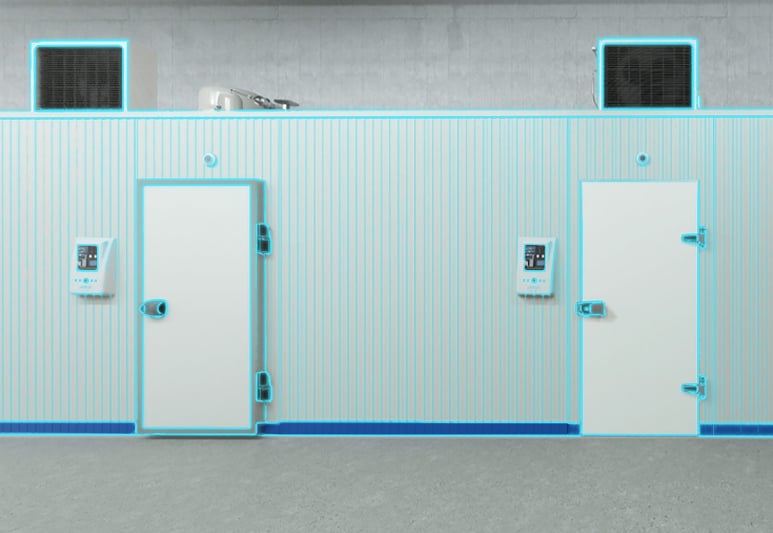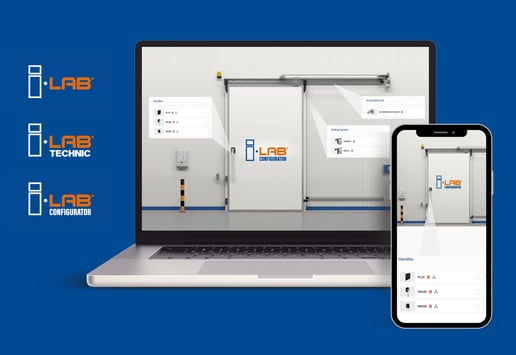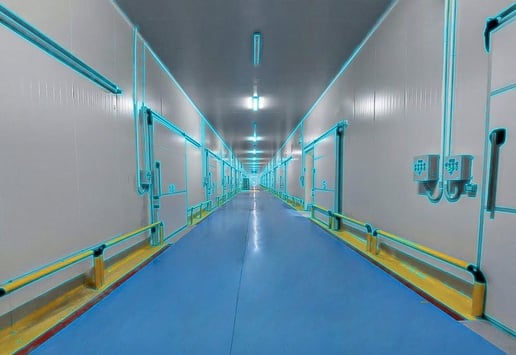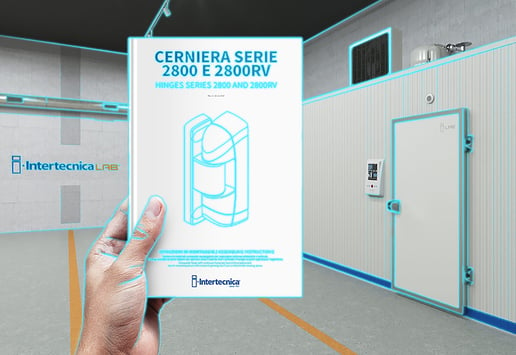The door is an essential element of a cold room, because in addition to being the part most exposed to mechanical stresses, it also represents a potentially "weak" point in terms of proper cold-proofing. It is therefore essential that the door is designed, built and installed with care, and that quality components are used to properly secure the fixed part of the cold room (wall) to the mobile part (the door itself).
To meet this need, cold room doors were originally made of wood: a material that guarantees good insulation efficiency but is not as satisfactory from the point of view of durability, because it is inevitably damaged by the passage of air and water. Wood also proved not to be the optimal solution since cold room doors, by their very nature, are opened and closed repeatedly and have to withstand a high level of humidity; as a result, it was then insulated with other materials such as cork. With the advent of synthetic plastic materials, cold room doors went on to be made of polystyrene and, more recently, polyurethane foam.
There are now many solutions on the market for the production of cold room doors. Here are some of the options available, with a description of the aspects and advantages of the various types of door:
- Flush door: this type of door is designed to take up the least amount of space, without any parts that protrude beyond the surface of the wall. A recessed door can be preferable in those cases where you want to aim for an aesthetic effect. A flush door is also easy to clean, since the absence of an upper edge where dust and dirt can gather guarantees a greater level of hygiene.
- Semi-rebated door: the main advantages of this type of door are that it is readily available on the market and the door can be made of the same panel cut out of the wall of the cold room itself. The cut-out panel, when completed with a suitable surround, can be easily turned into a semi-recessed door, reducing waste and making the most of the insulating materials.
- Overlapping door: this type of door is by far the most common on the market, and this presents undeniable advantages in terms of lower costs, faster production and the possibility to choose between a greater number of suppliers. Overlapping doors can also be easy to clean even when closed, something that guarantees hygiene without causing thermal dispersion and, therefore, a waste of energy.
The different types of door each have their own distinctive features, and there is no one type that can be considered the “best” in a given context. The choice of a specific type of door can also depend on the customs and habits in the country concerned. In southern Europe, for example, overlapping doors are commonly used, while in the USA or Scandinavia, recessed and particularly semi-recessed solutions are preferred. And although these customs can affect the availability of components and spare parts, Intertecnica has developed a wide range of products to meet all construction needs.
All these aspects must be taken into due consideration during the design phase to arrive at the best solution for the case in hand, bearing in mind that each option offers different advantages and that a choice must be made in a thought out and fully informed manner.
Don't miss out on the latest news from the world of Intertecnica.





